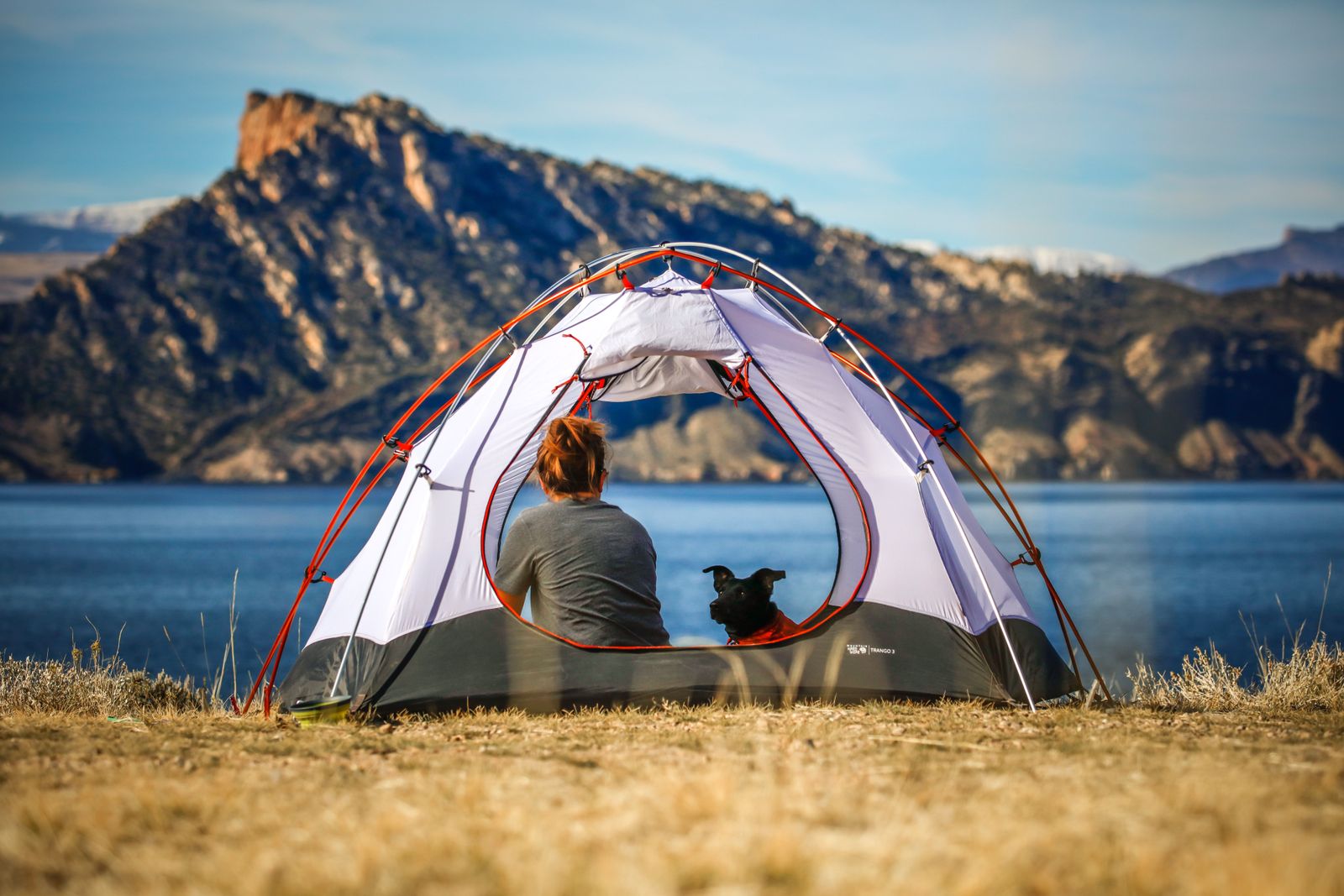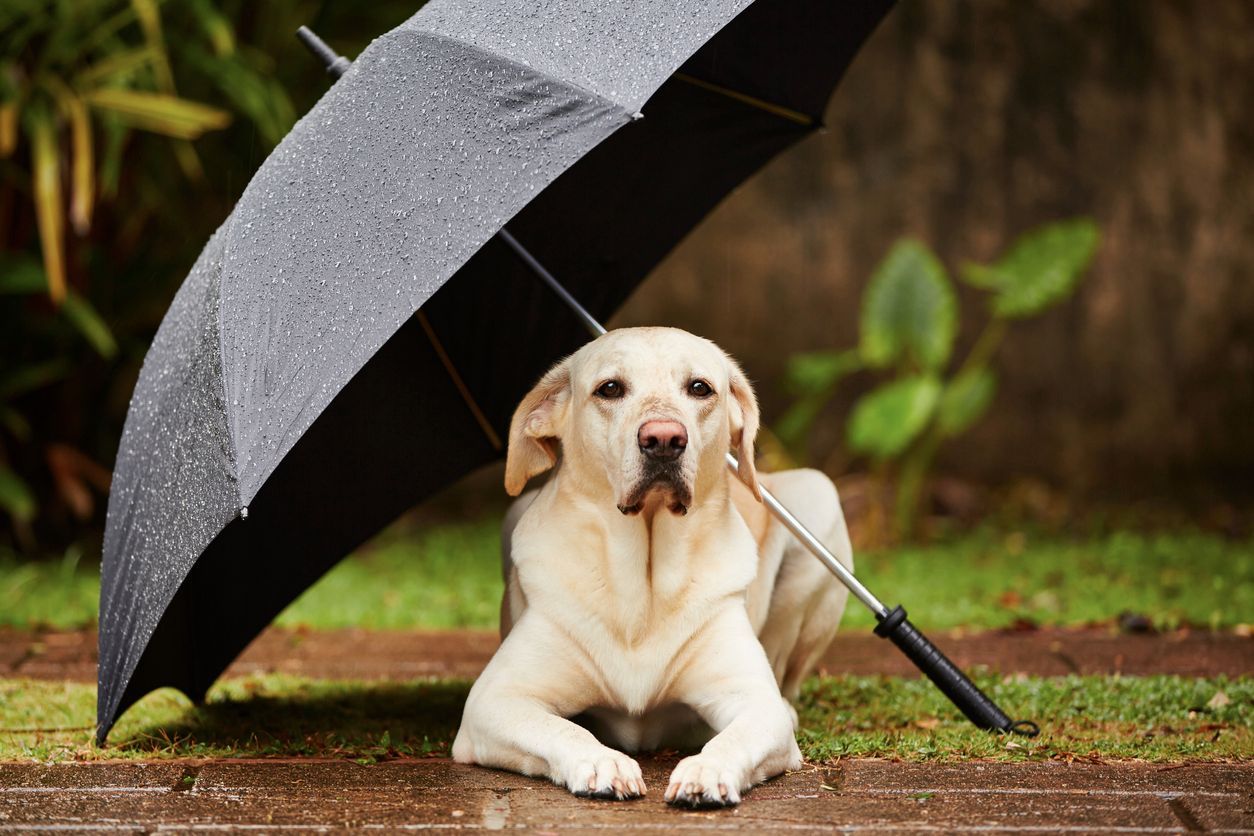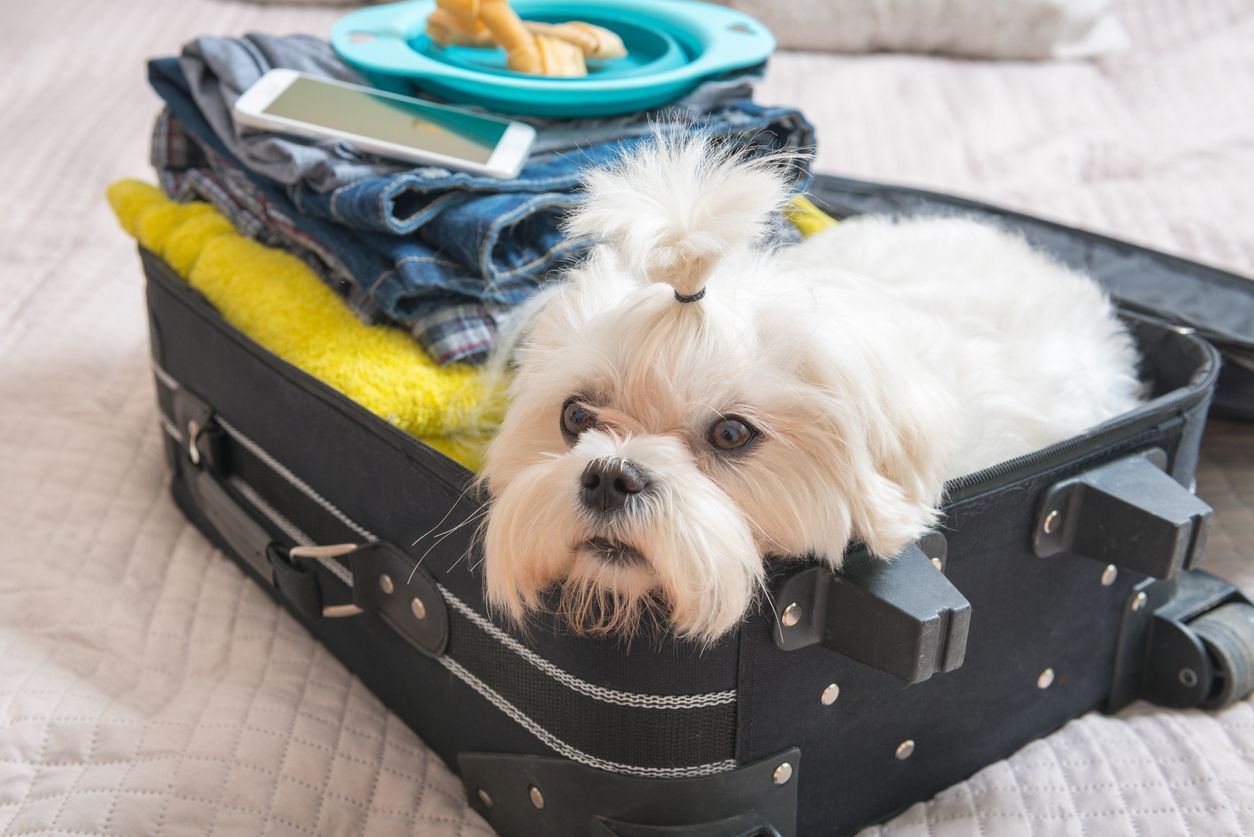Do's and Dont's of Camping With Pets

There’s nothing quite like the great outdoors, sitting next to a campfire and looking at the stars overhead before hopping into your tent for a good night’s rest. Now imagine sharing that with your fluffy or furry best friend alongside you. Camping with your pet can make the experience even better, plus you get to bond with your fave animal. But before you head out into the woods, you need to be prepared — and so does your pet.
Precautions
Before hitting the campsite with your pet, you’ll want to take some precautions to make sure they’ll stay safe while you’re in the wilderness. First and foremost is tick and heartworm prevention.
“The chance of encountering a tick is much higher in a camping environment, particularly when walking through long grasses,” says Vetster vet Dr. Rosemary Barber. And, she says, “heartworm comes from mosquito bites, and mosquitoes can be a huge problem while camping.”
So be sure your pet’s tick prevention is up to date before you leave and maintain the treatment schedule while you’re out. There are many different options available for tick and heartworm prevention, including chewable pills and topical medication. Ask your Vetster vet which option is the best for your pet.
Your pets should also be up to date on their vaccines before heading out to the campground. The primary wild animal reservoirs for transmission of rabies are skunks, raccoons, bats, and foxes, so the possibility of exposure increases when you’re camping in the natural habitats of these species. If you’re planning on staying at a pet-friendly campground, your pet will be at a higher risk for other infectious diseases like parvo and kennel cough. Consider getting your dog a leptospirosis vaccine, too — it’s an infection they can catch from contaminated water and soil.
Gear
Be sure you’ve got all the gear your pet needs for a successful camping trip before you leave. Dr. Barber suggests packing these items:
- Flotation device: “For all non-swimmers, especially bulldog breeds such as French Bulldogs,” Dr. Barber says. “If non-swimming pets are going to be in boats or on docks, a well-fitted life jacket is a very important safety tool.”
- Drinking water and a collapsible bowl: “Dogs will drink from any water source, but outdoor water carries a risk of Giardia (a parasite that affects the bowels), or Leptospirosis (a bacterial infection associated with water contaminated by urine from wild animals),” Barber says. Make sure they’ve got enough safe water to avoid temptation.
- First aid kit: Make sure it contains gauze bandaging material, gauze pads, Benadryl (Diphenhydramine) pills, antibiotic cream (like Polysporin), adhesive tape, and 3% hydrogen peroxide.
Of course, you’ll also want to pack enough food and maybe a sweater or jacket for your pet in case evenings get cold.
Etiquette
Remember, you’re probably not the only one at the campground. So, it’s important to ensure your pet is a good campsite neighbor. Dr. Barber says the two most important things to address are barking and leashes. If your dog is prone to barking, consider leaving them at home.
“It isn't fair to disturb a trip for other campers with excessive barking,” Barber says.
As for leashes, they are absolutely essential for a good camping trip. Your dog should always be on a leash when you’re at a campground.
“There are so many people that are afraid of dogs and it really isn't fair to ask them to confront their fear by having your dog run towards them,” Dr. Barber says. “This also makes the trip much safer for your dog. It is a prevention tool for avoiding fights with other dogs, and keeps them out of harm's way [from] cars, wild animals, and snakes.”
A word about porcupines
We’ve all seen the movies where a dog gets quilled by a porcupine (looking at you, Homeward Bound), but it’s important to know that this isn't all that common and they can’t actually throw their quills at all. Porcupines are peaceful and gentle and generally won’t attack your dog.
“The only time a porcupine ends up quilling a dog is when the dog gets too close and chases or attacks the porcupine,” Dr. Barber says. “So if you keep your dog on a leash while camping, their chance of ending up with a face full of painful quills will be reduced dramatically.” For more detailed information about dealing with an unfortunate encounter with a porcupine, see our guidelines here.
Before you head out into the wilds for your BFF (Best Furry Friend) camping trip, make sure you talk to your Vetster vet. Based on your pet’s history, they may have some more advice for you that addresses specific issues — and they can also recommend those all-important preventative medications!




